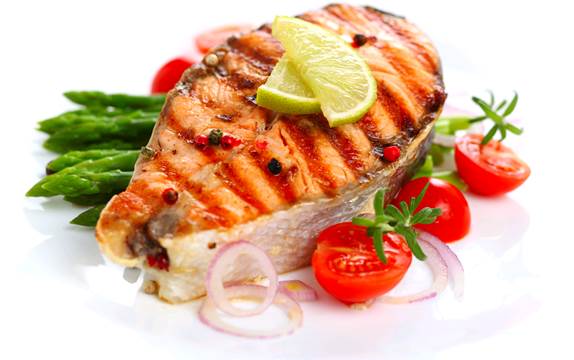
Be healthy without cutting everything out of your diet
Lately, diet trends have been to cut out entire food groups deeming some too unhealthy to incorporate into your diet at all. You only need to travel to prove that eliminating food groups from your diet is unnecessary. The proof is in hundreds and thousands of years of food habits and traditions that exist in countries around the world. Traveling is a great way to assess lifestyle and eating habits around the world and develop a Rolodex of eating habits that can be incorporated into your day-to-day life. While it might not be possible to adapt to every great lifestyle habit, like taking a famous Spanish siesta after lunch, into your day-to-day life, there is a lot to learn about diet from other countries. Since developing this arsenal of alternative eating habits takes some time, I’ve compiled a list of some that I’ve picked up from years of traveling and living abroad that I incorporate into my daily diet.
1. Balance and portion control
Stop cutting foods out of your diet and start learning to balance your diet and eat the appropriate quantity of food. You don’t have to stop eating carbs, meat, or gluten to maintain a healthy diet or even lose weight. Maintaining balance and controlled portions are the keys to eating what you want and being healthy. Italians eat pasta every single day, at least once per day, and as a population, Italians are usually named as one of the healthiest in the world. Carbs are not the problem, but taking into account the portion you are consuming and what else you’re eating during the day is important. Ensure that you are also eating meat or fish, fruits, and vegetables, not only carbs.
2. Big lunch and small dinner
Turn lunch and dinner upside-down. In most of North America, the largest meal of the day is in the evening, and lunch tends to be quick and small. In many other countries, I’ve visited the largest meal of the day is in the afternoon – not at night. After eating a large lunch, there is time to work off the energy throughout the day and leaves you needing a much smaller meal for dinner. I became accustomed to eating like this a few years ago after working in Spain and I felt more energetic and happy – not to mention I lost weight quickly. I’ve managed to maintain this style of eating for a few years now and the weight has stayed off too.
3. Salad at the end of the meal
In Italy, they eat salad at the end of the meal and not at the beginning. Eat leafy greens with nothing more than olive oil and vinegar or lemon and a pinch of salt and pepper, to help aid digestion after the meal.
4. Olive oil
Speaking of Italians, they have been named as the healthiest country in the world by the Bloomberg Global Health Index due to its population’s high intake of olive oil. Raw olive oil drizzled over vegetables, bread, arugula, fish, and beans are some great ways to consume more olive oil.
5. Fruit
Eat fruit every day. This one can be difficult if you live somewhere where the fruit is less than interesting or not of high quality. Living in Colombia, I discovered that my roommates always had a collection of fresh fruits like papaya, guanábana, and passion fruit. Each morning, they made fresh juice in a simple blender and, well, with almost every meal. In Italy and France, eating whatever fruit that is in the season after lunch or dinner is custom. I’ve once heard it’s best to eat fruit for breakfast but really as long as it is incorporated into your diet, it works.
6. Switch to unsalted butter
The first time I lived in Europe, I discovered that it is typically difficult to find salted butter. It is not very common for people to use it. In fact, I had a difficult time finding it in Portugal and Germany. You don’t have to cut out butter but switch to unsalted. I promise you won’t miss salted butter. It’s so easy to add salt to your food and it will reduce your salt intake exponentially.
7. Bulgur
When I lived in Turkey, I discovered what is commonly called Bulgur Rice. It is not rice at all but cracked wheat, and incredibly healthy for you. Usually, it is really cheap, and it is quick and simple to cook. It is high in fiber and protein, rich in minerals, and low in fat and delicious when cooked with spices.
8. Eat fish

If you’re lucky enough to live somewhere where there is good and inexpensive fish, eat fish at least once a week. Japan is the number one consumer of fish in the world and came out on top of the list of the World Health Organization (WHO) list of countries where people live to full longest health.
9. Eat cheese at the end of the meal
People have a preconceived notion that cheese is not good for you. I spent about three-and-a-half-years working in a cheese bar where I learned about its health benefits when quality cheese is consumed in moderation. Easier said than done, right? A trick I learned from living in France is to eat cheese at the end of the meal. This will ensure that you are full enough that you don’t eat the whole round of cheese in one sitting. In France and Italy, they eat cheese every day and are much healthier than North Americans on a whole.
10. Eat slow
Meals should be enjoyed and savored, and never rushed. Eating slowly will allow your mind to catch up with your body in deciding if your full or not. Eating quickly leads to overeating. Just about every European culture makes time for each meal to be enjoyed. In Japan, it is typical to stop eating when they are starting to feel full and take a 10-minute break to determine if they are still hungry. So slow down, and enjoy your food. It’s not just healthy but is also a great way to find relaxation in the day.






